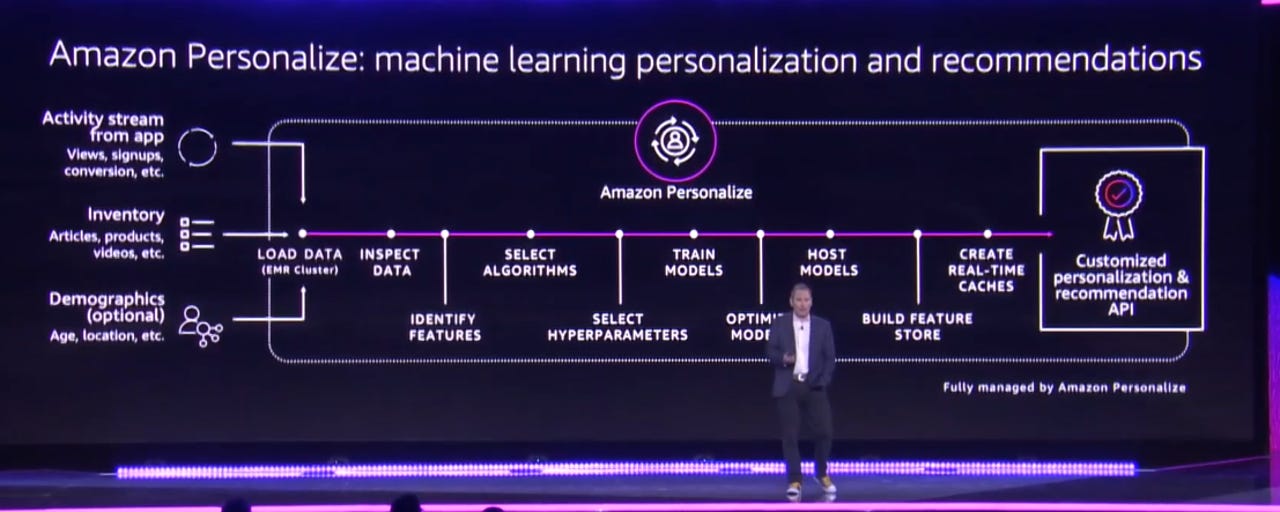Amazon Personalize, Forecast bring Amazon.com's AI techniques to AWS customers


Amazon Web Services on Wednesday introduced a new set of tools that bring cloud customers the same AI capabilities that power Amaon.com, in the form of an API. Amazon Personalization is a real-time personalization recommendation service, while Amazon Forecast offers time-series forecasting.
"This top layer is for companies and builders who don't want to mess with the models at all," AWS CEO Andy Jassy said.
Primers: What is AI? Everything you need to know about Artificial Intelligence | Machine learning? | Deep learning? | Artificial general intelligence? | The AI, machine learning, and data science conundrum: Who will manage the algorithms?
For Amazon Personalize, customers give Amazon a set of variables related to their customers, such as page views, conversion rates or demographic information. Amazon sets up an EMR cluster and inspects the data. Amazon selects from up to six algorithms originally built for its retail business, and it sets up parameters to train the data, and it hosts the models. From there, Amazon Personalize effectively spits out a recommendation via an API.
"These are private models, they're only yours," Jassy said.
Personalize is similar to Sagemaker, Amazon's fully managed machine learning service, Jassy explained - but at this level of the stack, customers only have to submit the inputs.
Similarly, Amazon Forecast uses time series forecasting built for Amazon.com.
"The problem in forecasting is it's not usually one or two data points that impact the forecast," Jassy said. In retail, there can be hundreds of variables to analyze, like weather, shipping times, and customer reviews.
Forecasting works very much in the same way Personalize does. A customer gives Amazon historical data such as supply chain and inventory information. They also provide all the variables that could impact their forecast. Amazon does all the work, like selecting hyper-parameters and training the models, to provide a time series forecast.
Amazon Forecast can be integrated with more traditional supply chain software like SAP and Oracle Supply Chain.
Jassy claimed the service is "providing up to 50 percent more accurate forecasts than what people were doing before at one-tenth the cost of traditional supply chain software."
AWS also introduced another tool that requires no machine learning expertise, specifically for extracting text from documents. Amazon Textract is an OCR ++ service to easily extract text and data from virtually any document, with no machine learning expertise required.
Traditional OCR is "kind of a dumb protocol," Jassy said that "takes the language as it comes" and may not provide useful information from it.
Textract, by contrast, could see a document with a table and recognize that the data belongs in rows and columns. "It's able to identify there's a table and able to lay out for you what that table should look like so you can use and read that data," Jassy said.
Related stories:
- What's the best cloud storage for you?
- Top cloud providers 2018: How AWS, Microsoft, Google
- Everything you need to know about the cloud, explained
- XaaS: Why 'everything' is now a service
- Infographic: Why companies are switching to Everything as a Service
- Free PDF download: The Future of Everything as a Service
- SaaS, PaaS, and IaaS: Understand the differences
- Cloud computing: How to make the move without losing control
- Amazon cloud lead shrinks as Microsoft Azure growth explodes TechRepublic